Inside Thierry Gillier’s art-filled Left Bank home
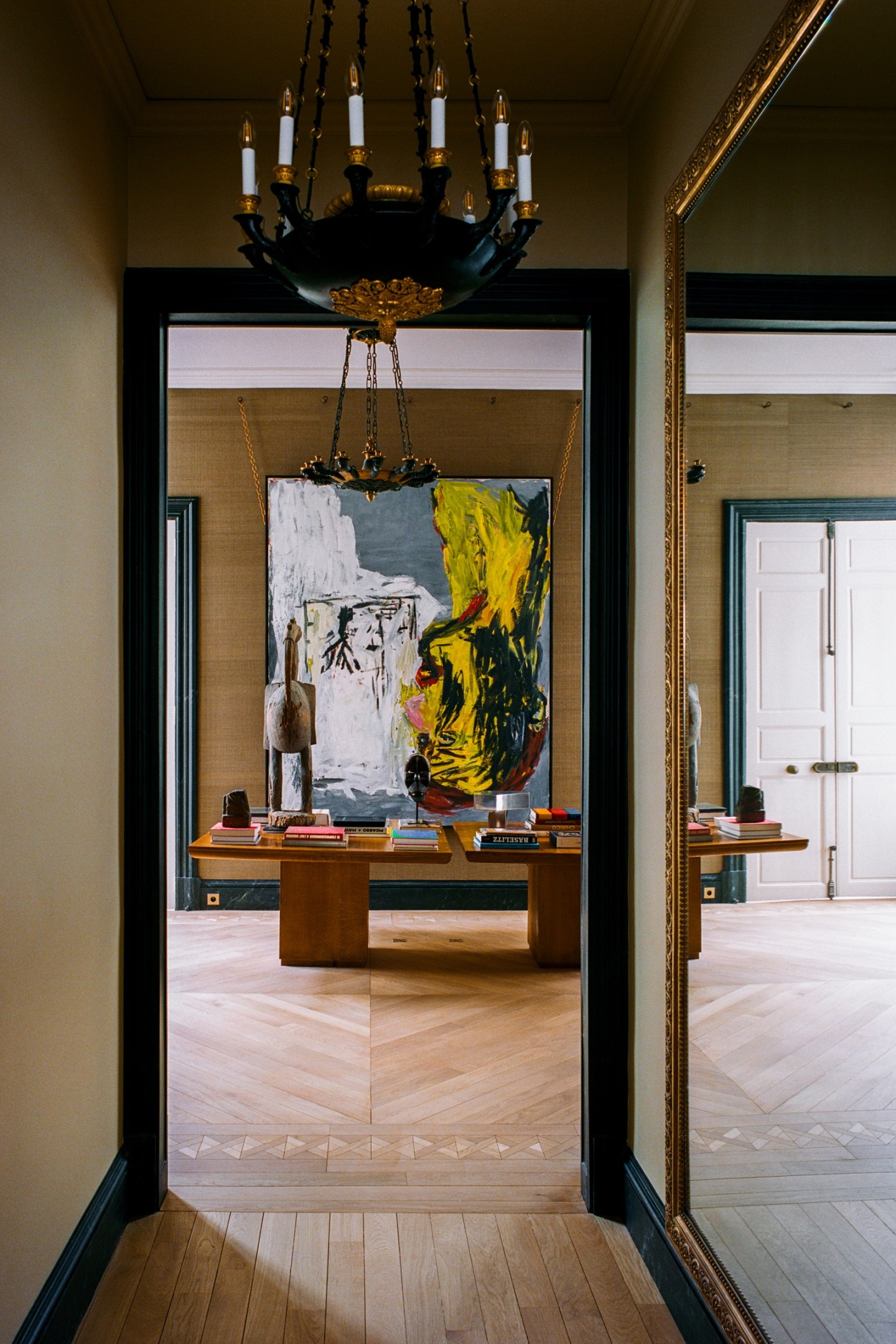
Roula Khalaf, Editor of the FT, selects her favourite stories in this weekly newsletter.
In the historic, grandiose trappings of French businessman Thierry Gillier’s new Left Bank home – a late 17th-century two-storey apartment furnished with works by significant 20th-century and contemporary artists – the concept of impermanence feels paradoxical. And yet the aesthetic is innate to Gillier, who craves constant change: be it flipping major artworks throughout his adult life as a collector or moving house for the sake of doing it all over again. “I am attached to my children and my dog, Prune, but not to things – you can’t be sentimental,” says Gillier, who is the founder and chairman of the French fashion brand Zadig & Voltaire and owner of the Parisian boutique hotel Château Voltaire.
Despite this detachment, Gillier has deep appreciation for his possessions – and their significance. His home, built originally for the Marquis d’Aubigné, appeals to his love of period architecture and childhood memories of his father’s 17th-century country pile, which was stuffed with antiques and tapestries. “This is the first time I have returned to this style,” the 64-year-old says of the Louis XVI tapestry-clad chairs and commodes he has acquired, which are in step with the architecture: the vast reception areas, soaring 4m-high ceilings and rooms that flow into one another from a central antechamber in the enfilade style.
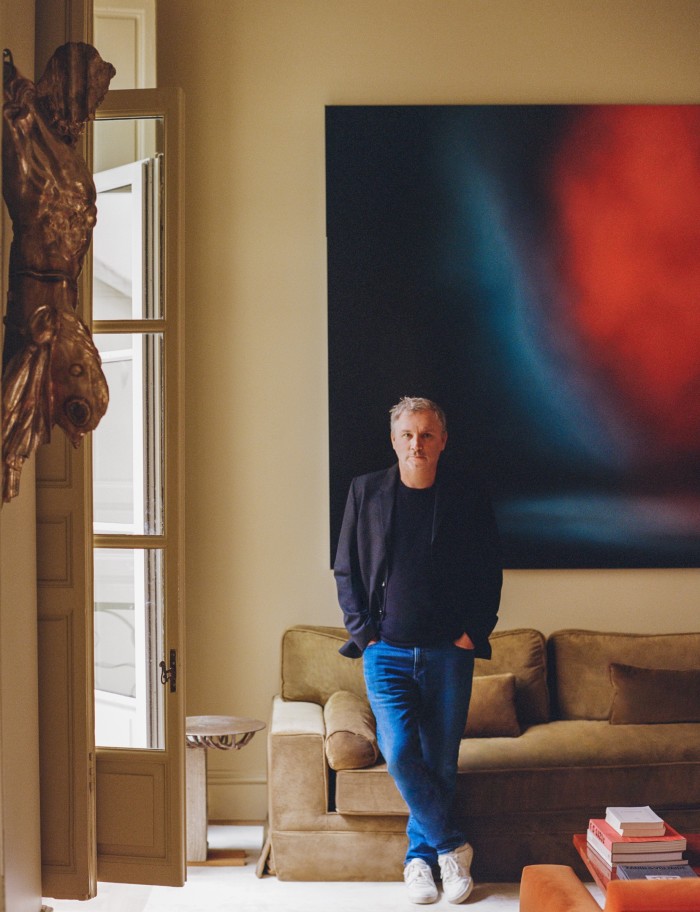
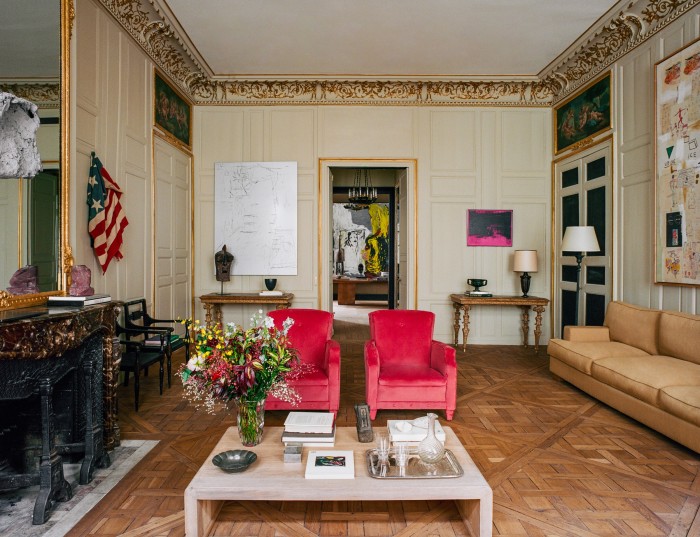
The apartment is an aesthetic about-turn from Gillier’s previous home – a lofty, modern five-bedroom space designed by the Belgian architect Bernard Dubois, which he shared with his ex-wife Cecilia Bönström, the former artistic director of Zadig & Voltaire. Where that residence reflected the grander scale of the cityscape in the 16th arrondissement, this one captures the charm of the Left Bank, with its narrow, cobblestone streets, antique stores, flower shops and local bistros.
Gillier’s new apartment also has a colourful backstory. It was the home of the French architect Christian Liaigre before he passed away in 2020. Several legendary Parisians have lived on the same street: Juliette Gréco resided at number 33. Jean-Michel Frank lived at number seven for 15 years. And Serge Gainsbourg at number five. Looking around the space today, none of Liaigre’s iconic minimalism remains. While he had favoured bright white walls and modern black leather sofas, Gillier pays homage to the apartment’s history, juxtaposing it with bold art. “It had to be authentic but with something unexpected,” he says of the vision he developed with Charlotte de Tonnac and Hugo Sauzay of the Paris-based architectural firm Festen.
The studio had previously worked with Gillier on Château Voltaire. “Our challenge here was to find a balance between restoration and interpretation, between the classic and the modern, and not to get stuck in one period,” says de Tonnac, adding, “I think the house is just like Thierry – eclectic, with a strong personality with contrasts and opposition.”
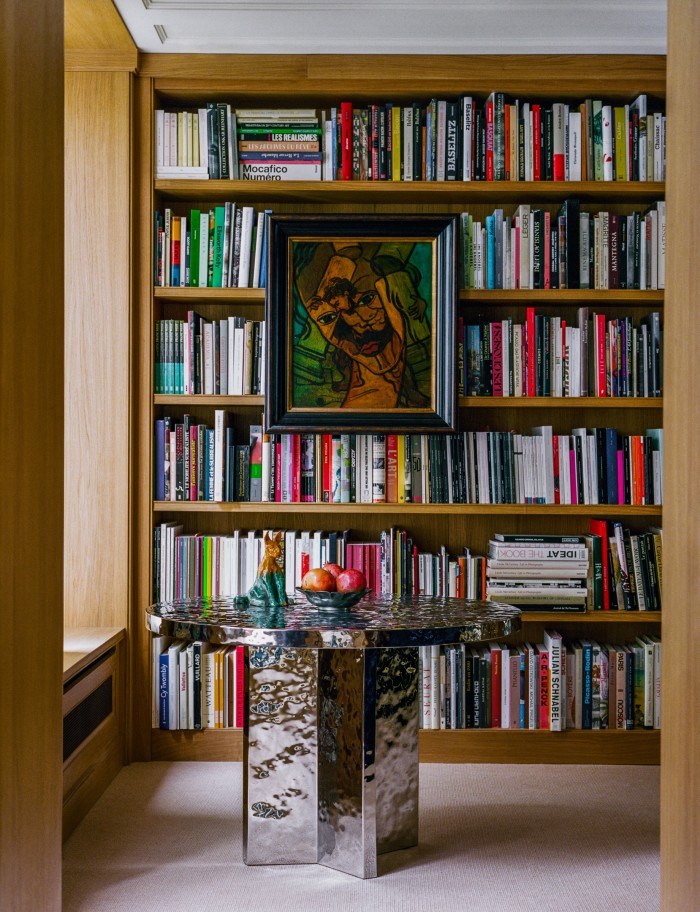
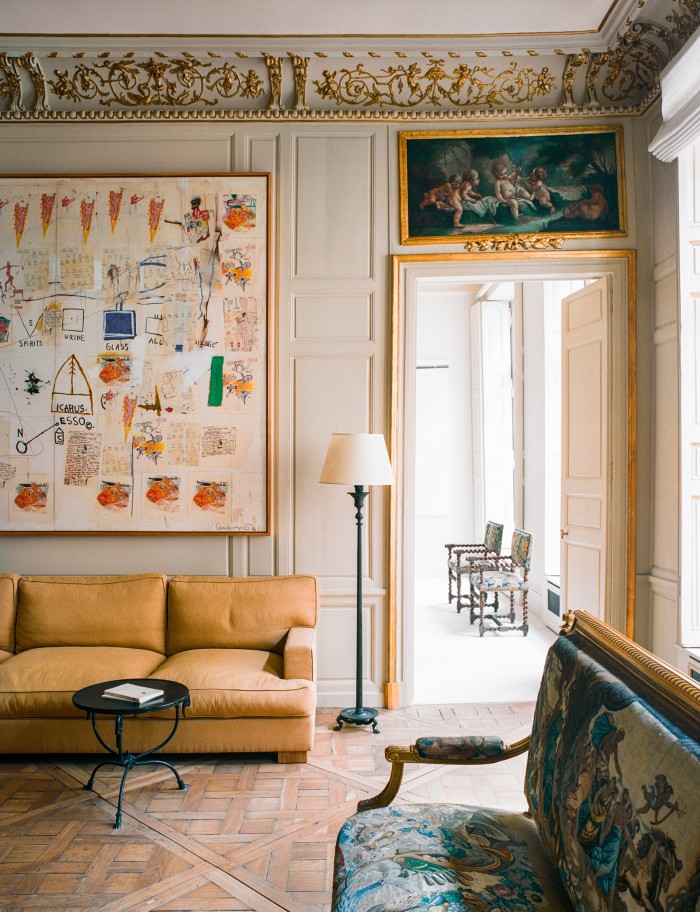
In the main salon, a stately entertaining room at the front of the home, historic frescoes and gold-leaf cornices are faithfully restored and the wall colour has reverted to a warm neutral called Cord by Farrow & Ball, which matched traces of original paint found behind a radiator.
Significant pieces – predominantly major late-20th-century and contemporary artists found with the help of art consultant Jean-Olivier Després, the former director of the Gagosian Gallery in Paris – punctuate the walls. An untitled 2022 work by Danh Võ and a dishevelled American flag concealing a 16th-century Madonna and Child oil painting hangs on one wall adjacent to an immense metallic canvas by German artist Anne Imhof. Gillier discovered Imhof’s work at the Venice Biennale in 2017. “It’s so impressive, and has a real vision and story that reflects what is going on right now,” he says.
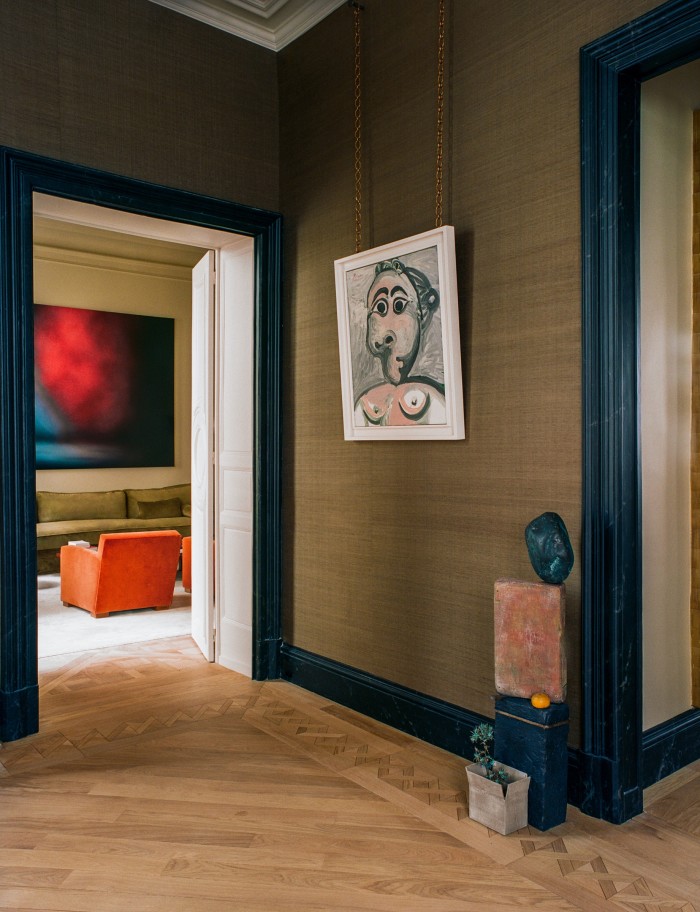

One can’t fail to notice the hot-pink silkscreen Little Electric Chair (1964) by Andy Warhol that pops against the stately backdrop. “This painting is like a car crash. It’s very political,” says Gillier. Icarus Esso (1986), a canvas by Jean-Michel Basquiat, which is almost 3m long, spans the length of another wall. Below it is a fawn-coloured six-seater sofa, which Festen designed to run the length of the piece.
Gillier met Warhol in the early ’80s when he was a student studying painting and film at Bard College in New York. He returned home to Paris and segued from art into fashion – not such a stretch given that he hails from a prominent textile family in northern France. His great-uncle, André Gillier, co-founded Lacoste, of the famous piqué cotton polo shirt. Thierry Gillier founded Zadig & Voltaire in 1997, naming it after the fictional novella Zadig (The Book of Fate) by the French writer and philosopher Voltaire. The brand found its niche in the somewhat glibly named “affordable luxury” category, into which The Kooples, Sandro and Maje were also cobbled. Today, the brand has more than 300 outposts worldwide and estimates its latest revenue to be around €500mn.
Gillier has been collecting since his 20s. His first significant purchase was Basquiat’s The Thinker. “It was a real financial commitment. I couldn’t look at it for a while,” he recalls. “It took me a year to feel comfortable enough to hang it, and I put it in my kitchen so I could live with it every day.” The Thinker moved on some time ago, as part of the entrepreneur’s quest to constantly refresh his collection.
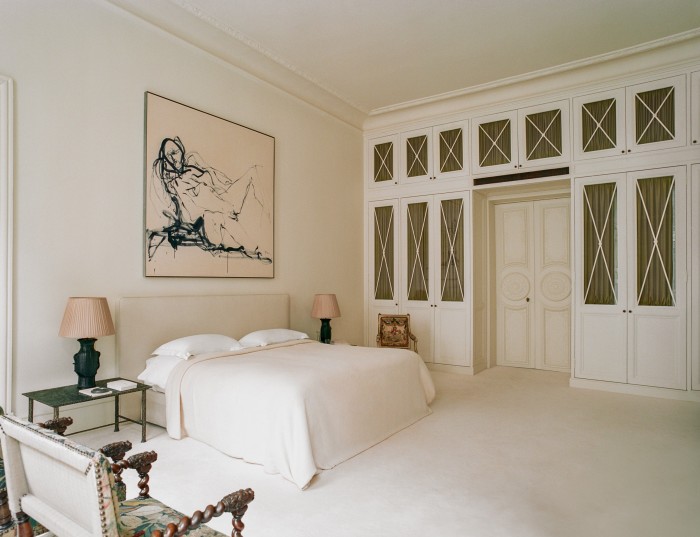
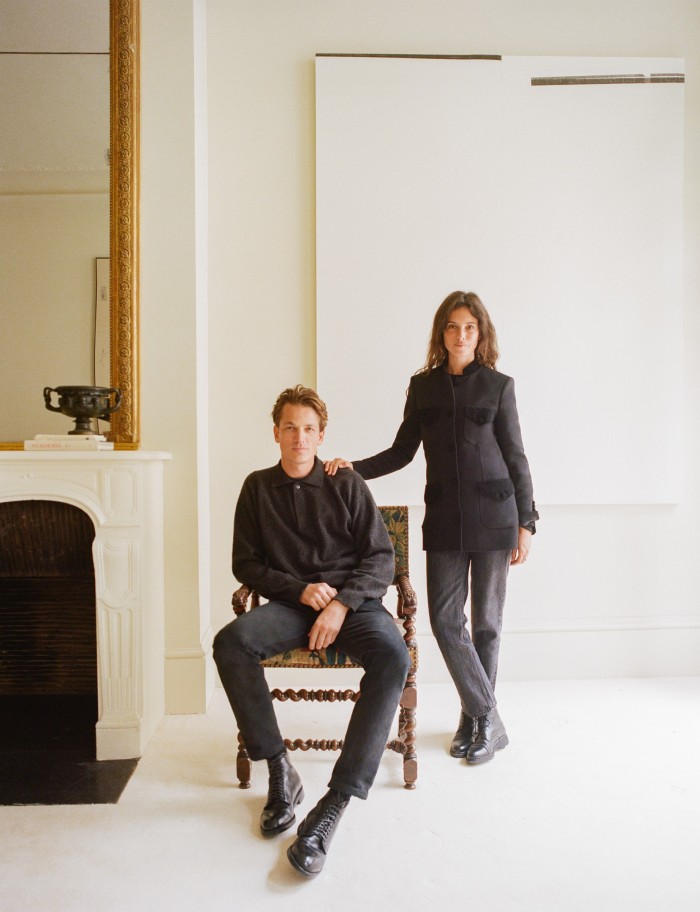
Tonnac and Sauzay used subtle tricks to ensure the interior did not compete with the art: from sanding back the original parquet flooring to lighten the rooms to dulling down the gold leaf so it didn’t dominate. The pair also designed parquet flooring with a bespoke contemporary pattern for the antechamber to temper the Versailles parquetry found in the main reception rooms. “Thierry always pushes us further. To be bolder, to go more into detail,” de Tonnac says of the detailing. Sauzay nods in agreement: “We wanted to let the art live, to enhance it, so we needed to erase the space but not in the way a gallery would.”
The walls of the antechamber are khaki-coloured silk moiré, which creates a muted backdrop to some of the home’s most prized works: the larger-than-life painting Kopf in der Sonne (1982) by the German artist Georg Baselitz, which has appeared in some of his major retrospectives; and Picasso’s Buste de Femme, painted in the artist’s final years. Far from being just a thoroughfare, the room has been given importance in the scheme to create a sense of arrival and transition.
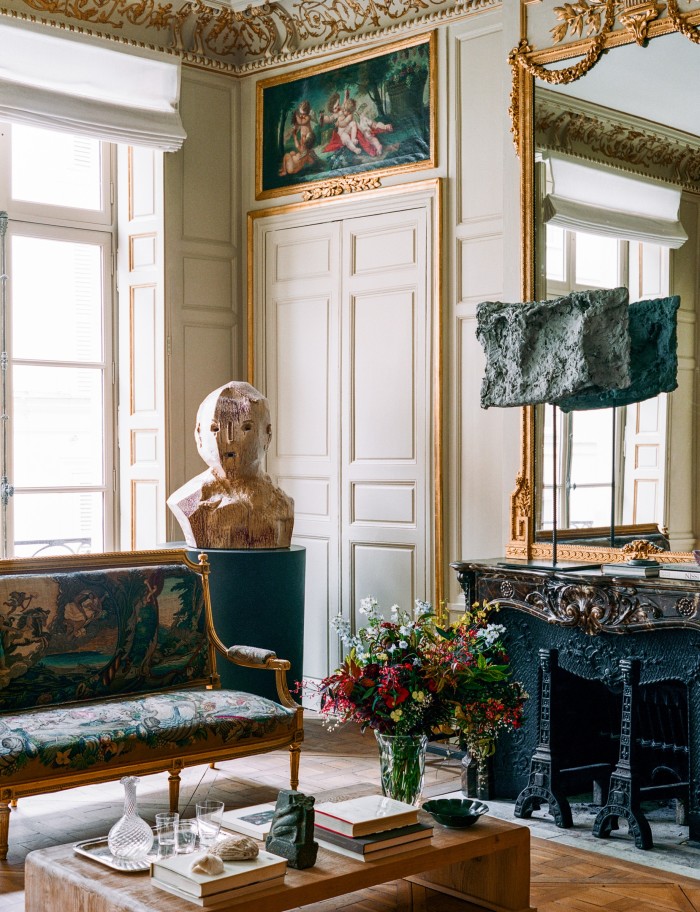
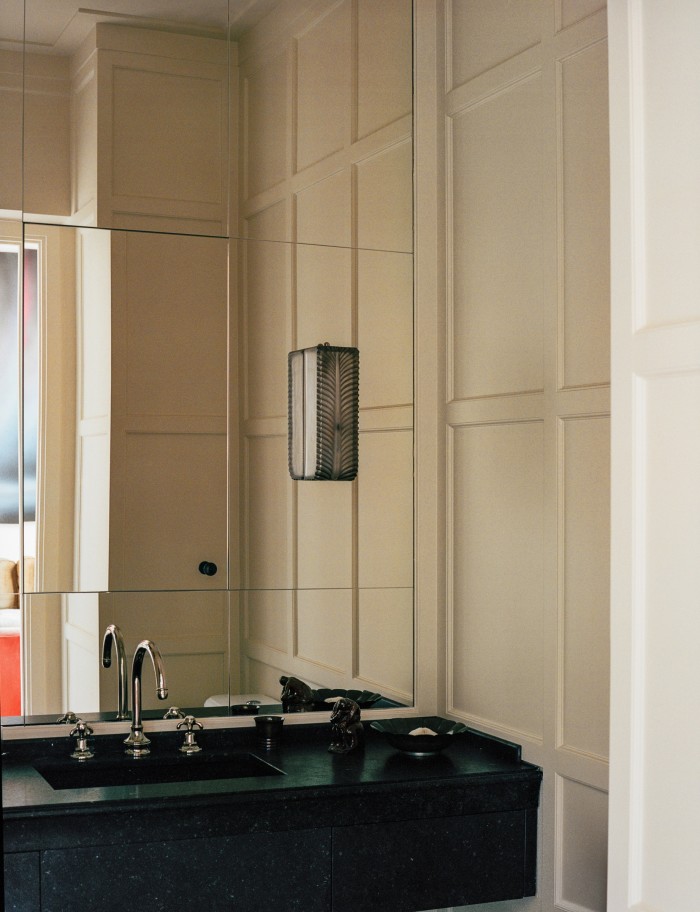
From here, everything flows. To the right are guest chambers and a bathroom; to the centre is the main salon; and to the left are Gillier’s private quarters: a salon, bath and a spacious bedroom, providing a breath of fresh air in chalky white. Gillier and Bönström’s pre-teen son Emil has his quarters at the back of the house, off the library-television room. Though vast, the layout allows for a surprising amount of intimacy. “I needed it to feel cosy, like a home,” says Gillier, who spends part of his time working on the sofa in his private living room, which has a view overlooking a secluded courtyard garden.
Very few changes were made to the apartment’s original layout, apart from moving the kitchen to the ground floor. Fitted with industrial Inox cabinetry and a cosy banquette under the window, this is the only room downstairs. It sits just to the left of the grand semi-circular stone staircase that leads to the rest of the living quarters on the first floor. The house has no proper dining room. “I am not into formal sit-down dinners. In Paris, you just eat at a restaurant next door,” Gillier says. He does, however, have a more laid-back entertaining option in the form of two Sauzay and de Tonnac-designed oak display tables that can be pushed together for a buffet dinner when required.
Elsewhere, the designers have played with perspective, using various sightlines framed by the doorways to position major canvases or objects. “At every angle there’s a new perspective, and the light from the windows also changes with the season,” Sauzay says. The artwork will also rotate and evolve as Gillier’s collection changes. In fact, hitting refresh is the whole point. “When you collect art, it becomes a drive to find something truly unique,” Gillier smiles. “You have to be in love with the art, it’s in your blood, but also be aware that you can always do better.”
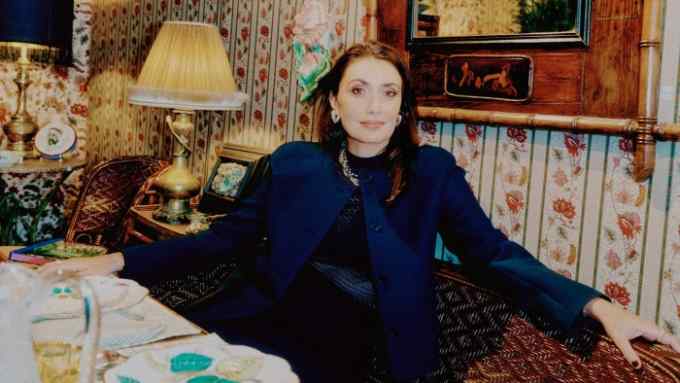
Comments